The Tay Bridge Disaster of 1879 is something that has stuck with me from my childhood holidays in Dundee staying with my grandparents. I can vividly remember my grandmother pointing out the remains of the original bridge and telling me in hushed, reverential tones about a tragedy that, despite happening decades before her birth, seemed to still loom large in the local consciousness.
David Robertson’s The Tay Bridge Disaster looks back on that evening in December, 1879 when the rail bridge between Wormit and Dundee that crossed the Firth of Tay collapsed, plunging a train and its passengers into the waters below and killing all on board (estimates vary but between 60 and 75 people were killed). Robertson, of course, has been a prolific creator on the UK small press scene for many years, producing a wide range of slice-of-life and genre comics under his Fred Egg imprint. They have included David Robertson’s Dump and Break the Cake, and Robertson’s many contributions to anthology publications in that time.
As a Dundee resident it is perhaps unsurprising, then, that this notable part of local history would make its way into one of Robertson’s comics in due course. Unlike his usual multi-story collections though, The Tay Bridge Disaster sits adjacent to his wider body of work in a one-shot minicomic. An appropriate decision for a very human tragedy that fittingly deserves to be reflected on in isolation.
Robertson approaches the story with a recognisable mix of personal reflection and historical research. Told in a landscape format with a newspaper-strip style presentation, each page mostly consists of three-panel offerings, many of which act as complete studies of certain aspects of the disaster in themselves. The initial pages look at the early safety doubts and criticisms of Sir Thomas Bouch’s design for the bridge (which would prove all too prophetic) and the history of its construction. It’s only when we reach the horrifying events of December 1879 that Robertson breaks away from the three-panel grid to depict in single images on black backgrounds the calamitous collapse of the bridge and fate of the train.
The aftermath and the event’s depiction in popular culture (in poetry by “the world’s worst poet” the infamous William McGonagall and a key sequence in the novel and film Hatter’s Castle) are all given time alongside the memorials to those who lost their lives. Robertson ensures his presentation of the subject matter is always accessible, providing information in digestible chunks. But the obvious meticulous research that has gone into the project also ensures it never lapses into inappropriate superficiality. Visually the sepia tones root the story in a period feel and the shifts between realism and occasional symbolism bring alternative perspectives on events. This is undoubtedly Robertson’s finest moment in comics to date and for those unaware of the events it depicts an excellent starting point for further reading.
Review by Andy Oliver





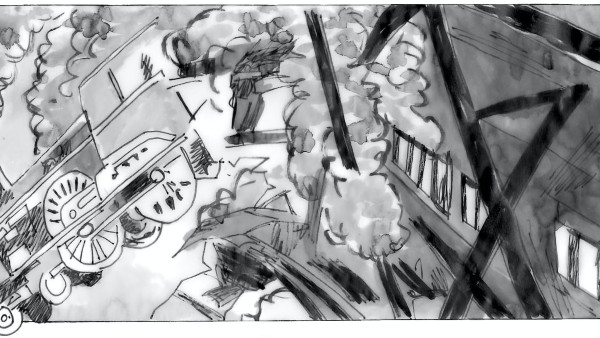
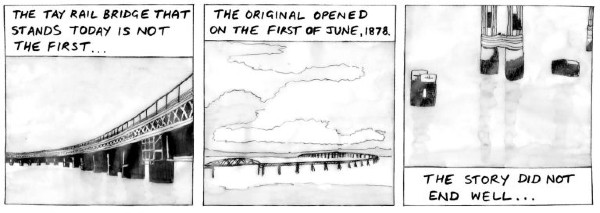
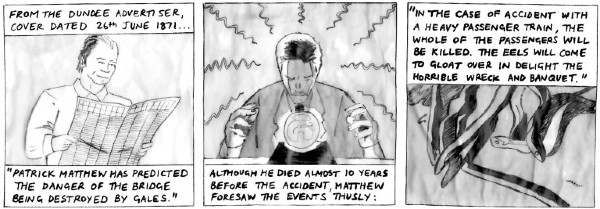
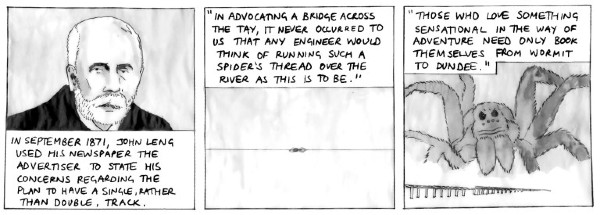

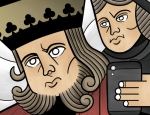

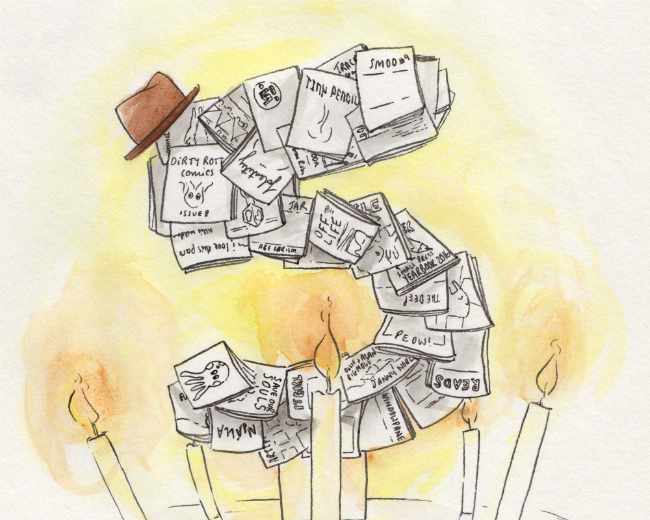
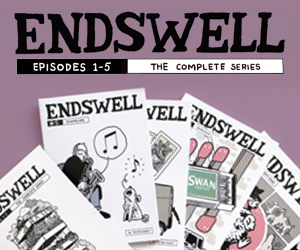





It was fascinating to learn about the tragic 1879 bridge collapse and how Robertson’s detailed and thoughtful storytelling brings this piece of history to life. Your review highlights how well he blends personal reflection with historical research. Thanks for sharing this compelling look at his work!